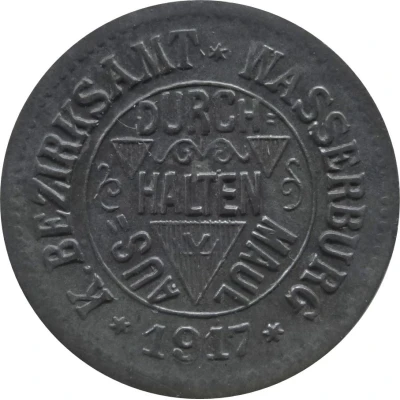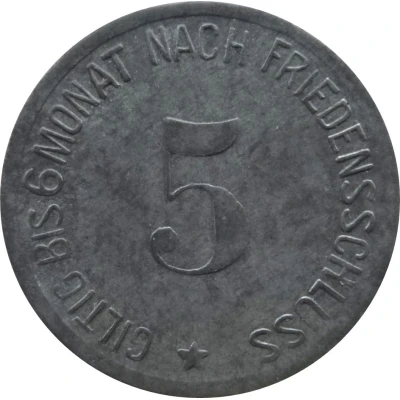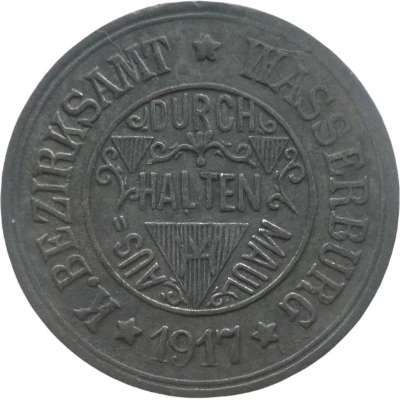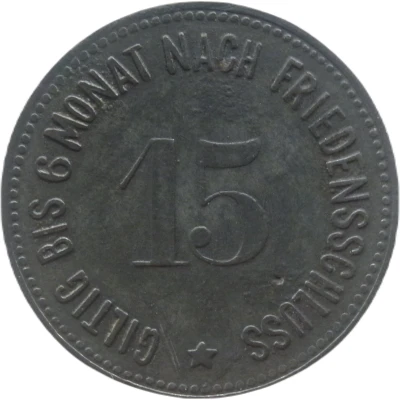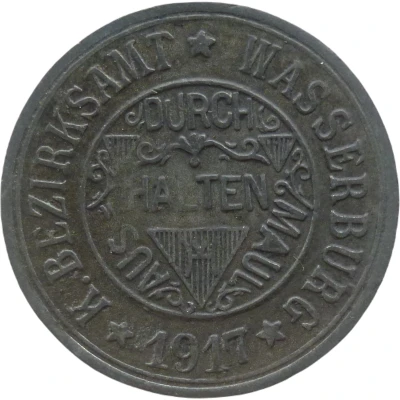
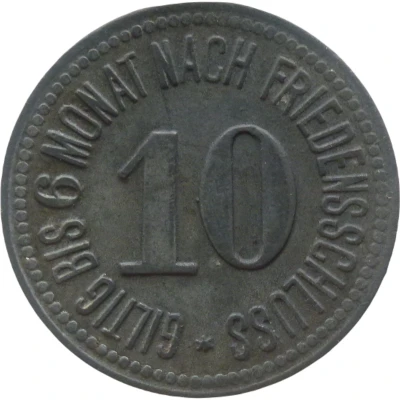

© Willem63 (CC BY-NC-SA)
10 Pfennigs - Wasserburg am Inn
1917 year| Zinc | 1.8 g | 20.0 mm |
| Issuer | District of Wasserburg am Inn (Federal state of Bavaria) |
|---|---|
| Emperor | William II (Wilhelm II) (1888-1918) |
| Type | Standard circulation coin |
| Year | 1917 |
| Value | 10 Pfennigs (10 Pfennige) (0.10) |
| Currency | Mark (1914-1924) |
| Composition | Zinc |
| Weight | 1.8 g |
| Diameter | 20.0 mm |
| Thickness | 1.0 mm |
| Shape | Round |
| Technique | Milled |
| Orientation | Medal alignment ↑↑ |
| Demonetized | Yes |
| Updated | 2024-10-04 |
| Numista | N#42944 |
|---|---|
| Rarity index | 72% |
Reverse
Pearl rim, legend circling denomination
Script: Latin
Lettering:
GILTIG BIS 6 MONAT NACH FRIEDENSSCHLUSS
10
★
Edge
Plain
Comment
Mintage update 28/05/2021 to align variant description to FUNCK => Collector, check your version if you entered it beforeInteresting fact
One interesting fact about the 10 Pfennigs - Wasserburg am Inn 1917 coin is that it was issued during a time of economic turmoil in Germany. The country was facing hyperinflation, and the value of the German mark was rapidly decreasing. In response, the government introduced a new currency, the "Notgeld," which included coins like the 10 Pfennigs - Wasserburg am Inn 1917. These coins were made of zinc, a cheaper metal than the traditional copper or silver, and were designed to be used as small change during this difficult period. Despite their humble origins, these coins have become sought-after collectibles among numismatists today.
